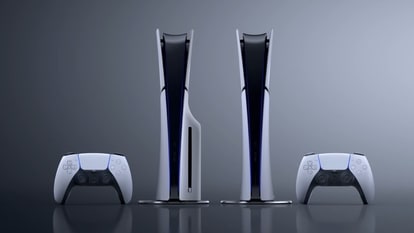New threat to spacecraft
Investigators into the Columbia mishap said on Thursday that they have uncovered flaws in the shuttle's system of explosive bolts that could do catastrophic damage to the remaining spacecraft.
Investigators into the space shuttle Columbia accident said Thursday that they have uncovered flaws in the shuttle's system of explosive bolts that could do catastrophic damage to the remaining spacecraft.
Members of the Columbia Accident Investigation Board said they don't think a bolt contributed to the loss of the shuttle and the deaths of its seven crewmembers Feb. 1. But the bolts are the most recent entries on a long list of shuttle parts that NASA either barely tested or did not test at all.
The finding offers further evidence that NASA has done a poor job of assessing risks to the shuttles. That failure is expected to be a key part of the investigation board's final report this summer.
Investigators have criticized the agency's lack of research into shuttle components and what causes them to fail.
'We've got to start testing components that are part of the shuttle, and not just the big ones,' board member Maj. Gen. John Barry said.
The bolt system is designed so that roughly two minutes after launch, explosions split eight 85-pound bolts. That allows the shuttle's rocket boosters to separate from the shuttle. The boosters fall into the ocean and are reused.
Stray pieces of bolt are supposed to fall into structures called bolt-catchers, so the pieces don't hit the shuttle. But when investigators tested the bolt-catchers, they found that they fell apart far more easily than they were supposed to.
The bolt-catchers could allow bits of bolt to slam into the shuttle. The risk from the bolts is so great that the board will probably declare that NASA must fix them before any shuttle flies again.
The equipment was approved for flight in 1979 even though the actual flight hardware wasn't tested, Barry said.
The bolt-catchers failed at a welded joint that is supposedly double-checked. Shuttle engineers were 'surprised' by the board's findings, Barry said.
Columbia investigators continue to focus on foam insulation from the shuttle's external fuel tank as the leading cause of the spacecraft's breakup.
A chunk of that foam hit the shuttle's wing shortly after launch Jan. 16. Investigators suspect the foam breached the wing, letting in superhot air that melted the wing's interior.
Two witnesses told the board Thursday that NASA could improve safety by comprehensively testing the shuttle's numerous complex systems. The need is especially important as the shuttle gets older, said Tom Young, a former high-ranking NASA official who has overseen several advisory committees at the agency. 'Space is unique,' he said. 'One strike and you're out.'
For example, NASA cannot test-fire the shuttle's main engines on the ground, said Russell Turner, the former head of a private company that does most of the work on the shuttle. The only information about how the engines age comes from actual flights, he said.
The potential for a bolt to strike the shuttle is just one area revealed recently in which NASA did not fully test systems that could compromise safety:
• Board member Douglas Osheroff said he performed a test in his kitchen for $100 that called into question NASA's theory about how foam breaks off the external tank.
NASA's theory was that trapped gases in the foam liquefy, then expand during liftoff, breaking chunks of the material off. That is 'hokum,' board chairman Harold Gehman, a retired admiral, said.
Osheroff, a Stanford University physics professor, said similar tests had not been performed during the life of the shuttle even though pieces of foam repeatedly came off the tank after launch.
• A chunk of foam like the one that hit Columbia was fired at high speed at a mockup of the shuttle's wing last week. The tests revealed that the soft, lightweight foam can damage the wing. NASA engineers had insisted that the front edge of the wing was so tough that it could not be damaged by foam.
'A lot of the systems that we're dealing with are very, very complicated systems, and they (were) not necessarily well-understood even at the time they were designed,' said board member Sally Ride, a former astronaut. 'And that makes it all the more important to do tests.'
Catch all the Latest Tech News, Mobile News, Laptop News, Gaming news, Wearables News , How To News, also keep up with us on Whatsapp channel,Twitter, Facebook, Google News, and Instagram. For our latest videos, subscribe to our YouTube channel.



























